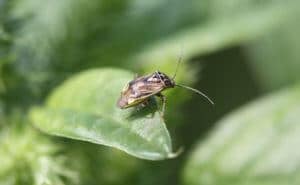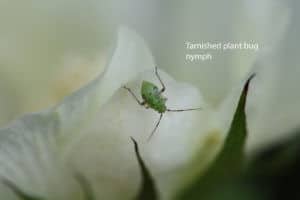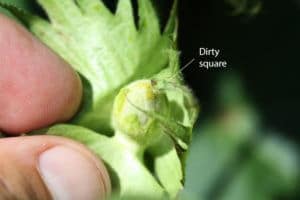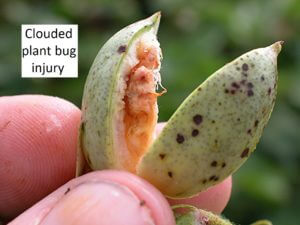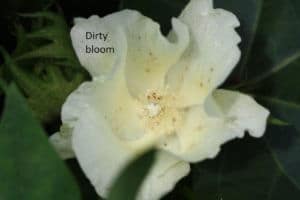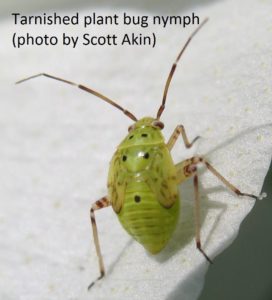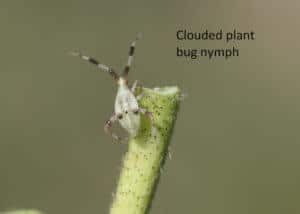Management options
| Insecticide (Trade Names) for Plant Bugs | Lb Active Ingredient per Acre | Amount Formulation per Acre | Performance Rating |
|---|---|---|---|
| PLANT BUGS - Pre-bloom window* | |||
| acetamiprid (Intruder Max 70WP, Strafer Max 70WP) | 0.074 – 0.101 | 1.7 - 2.3 oz | 6 |
| flonicamid (Carbine 50WG) | 0.081 - 0.089 | 2.6 - 2.8 oz | 5 |
| imidacloprid 2.0 | 0.047 - 0.062 | 3 - 4 oz | 7 |
| imidacloprid 4.0 (Couraze Max) | 0.047 - 0.062 | 1.5 - 2 oz | 7 |
| imidacloprid 4.6 (Admire Pro) | 0.047 - 0.062 | 1.3 - 1.7 oz | 7 |
| sulfoxaflor (Transform 50WG) | 0.047 - 0.071 | 1.5 - 2.25 oz | 8 |
| thiamethoxam (Centric 40WG) | 0.0375 - 0.05 | 1.5 - 2.5 oz | 7 - 8 |
| PLANT BUGS - Blooming window | |||
| acephate 90 (Orthene 90S) | 0.45 - 0.675 | 0.5 - 0.75 lb | 9 |
| acephate 97 (Orthene 97SP) | 0.49 - 0.73 | 0.5 - 0.75 lb | 9 |
| dicrotophos (Bidrin 8) | 0.31 - 0.5 | 5 - 8 oz | 8 |
| dimethoate 4 | 0.25 – 0.5 | 8 - 16 oz | 6 |
| malathion 5 | 1.25 | 32 oz | 6 |
| novaluron (Diamond 0.83)** | 0.058 - 0.078 | 9 - 12 oz | 7 |
| oxamyl (Vydate C-LV 3.77) | 0.29 - 0.35 | 10 - 12 oz | 6 |
| pyrethroids*** | See labels (use mid- to high-recommended rates) | 2 - 4 | |
| sulfoxaflor (Transform 50WG) | 0.047 - 0.071 | 1.5 - 2.25 oz | 9 |
* These products perform better prior to bloom and are primarily recommended in this window. Avoiding the use of pyrethroid, organophosphate and carbamate insecticides prior to bloom is suggested for resistance management.
**This product controls only immature plant bugs. Tank mixes with other insecticides are recommended if significant numbers of adults are present.
***Pyrethroid insecticides will not provide adequate control of tarnished plant bugs. However, tank mixing pyrethroid insecticides with other Phase II recommended insecticides will often improve their performance.
- Plant early maturing varieties.
- Attempt to plant cotton in a block of fields. This improves the efficiency of management and often reduces infestation levels.
- Under heavy pressure, a second application made at a 4-5 day interval may be necessary for best control.
- Insecticide applications can be terminated when cotton has accumulated 250-300 DD60s past NAWF5 (NAWF5 = average of 5 nodes above a first position white flower).
- ThryvOn varieties should be sprayed at the current threshold. Adult tarnished plant bugs can quickly drop square retention below 80%.
